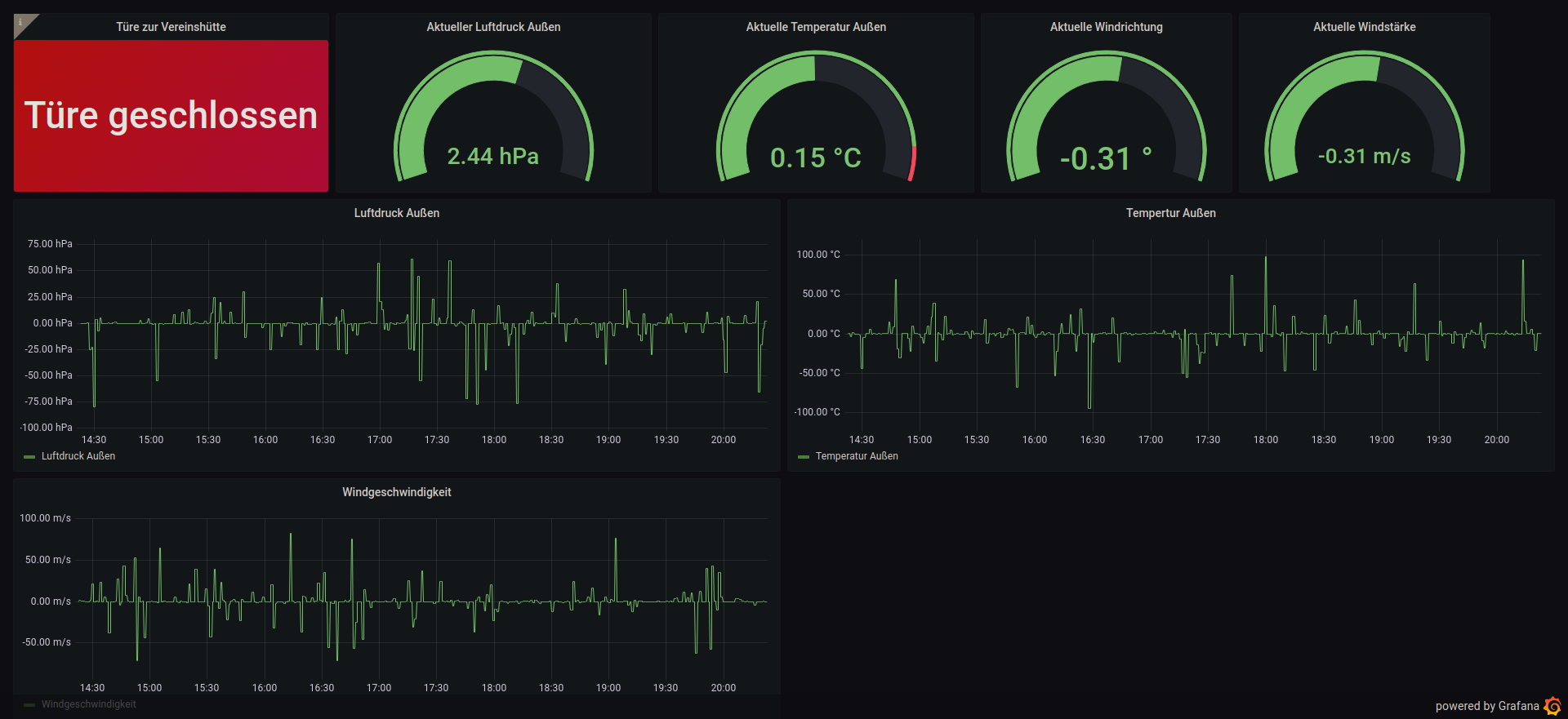3.4 KiB
3.4 KiB
msv-clubhouse-node
- Work in progress !
- Technical demo
Overview
Hardware
Register Device at TTN
- Register manually a device.
- Frequency plan Europe 863-870 MHz (SF9 for RX2 - recommended)
- LoRaWAN version LoRaWAN Specification 1.0.2
- Regional Parameters version RP001 Regional Parameters 1.0.2
- JoinEUI all zeros
- Generate keys
Build Node Firmware
- Clone repo
- Init GIT-submodules
git submodule init
git submodule update
- Set following defines via menuconfig:
AppEUI
DevEUI
AppKey
TTN LoRa frequency / region
- Build with ESP-IDF extension in VSCodium
MQTT Endpoint
pip3 install paho-mqtt
mkdir /opt/msv-clubhouse-backend/cd /opt/msv-clubhouse-backend/- import
msv_clubhouse_backend.pyandconfig.py - Set the constants in
config.py chmod +x /opt/msv-clubhouse-backend/msv_clubhouse_backend.pychown -R prometheus /opt/msv-clubhouse-backend/nano /etc/systemd/system/msv-clubhouse-backend.servicesystemctl daemon-reload && systemctl enable --now msv-clubhouse-backend.service
JS Payload Formatter
function Decoder(bytes, port) {
var decoded = {};
// temperature
rawTemp = bytes[0] + bytes[1] * 256;
decoded.degreesC = sflt162f(rawTemp) * 100;
// pressure
rawPressure = bytes[2] + bytes[3] * 256;
decoded.pressure = sflt162f(rawPressure) * 100;
// windspeed
rawWindspeed = bytes[4] + bytes[5] * 256;
decoded.windspeed = sflt162f(rawWindspeed) * 100;
// winddirection
rawWinddirection = bytes[6] + bytes[7] * 256;
decoded.winddirection = sflt162f(rawWinddirection) * 100;
if(bytes[8] === 0){
decoded.dooropen = false;
}else{
decoded.dooropen = true;
}
return decoded;
}
function sflt162f(rawSflt16)
{
// rawSflt16 is the 2-byte number decoded from wherever;
// it's in range 0..0xFFFF
// bit 15 is the sign bit
// bits 14..11 are the exponent
// bits 10..0 are the the mantissa. Unlike IEEE format,
// the msb is transmitted; this means that numbers
// might not be normalized, but makes coding for
// underflow easier.
// As with IEEE format, negative zero is possible, so
// we special-case that in hopes that JavaScript will
// also cooperate.
//
// The result is a number in the open interval (-1.0, 1.0);
//
// throw away high bits for repeatability.
rawSflt16 &= 0xFFFF;
// special case minus zero:
if (rawSflt16 == 0x8000)
return -0.0;
// extract the sign.
var sSign = ((rawSflt16 & 0x8000) !== 0) ? -1 : 1;
// extract the exponent
var exp1 = (rawSflt16 >> 11) & 0xF;
// extract the "mantissa" (the fractional part)
var mant1 = (rawSflt16 & 0x7FF) / 2048.0;
// convert back to a floating point number. We hope
// that Math.pow(2, k) is handled efficiently by
// the JS interpreter! If this is time critical code,
// you can replace by a suitable shift and divide.
var f_unscaled = sSign * mant1 * Math.pow(2, exp1 - 15);
return f_unscaled;
}
Grafana Dashboard
see frontend/

